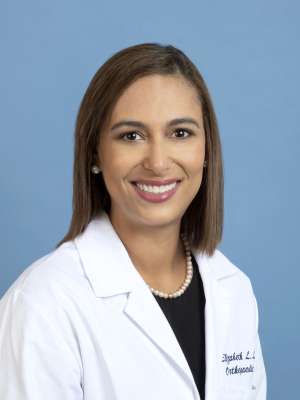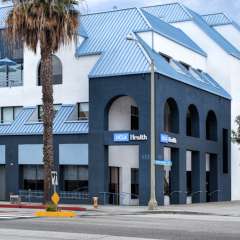
Elizabeth L. Lord, MD
- Spine Surgery
About
Dr. Elizabeth Lord is a Board Certified fellowship trained spine surgeon and an Assistant Professor of Orthopaedic Surgery and Neurosurgery. Dr. Lord specializes in complex spine conditions including adult and adolescent spinal deformity and scoliosis, reconstructive surgery of the cervical, thoracic, and lumbar spine, and primary and metastatic tumors of the spine. Dr. Lord received dual fellowship training in Orthopaedic and Neurosurgical spine surgery at the prestigious New York University Langone/Hospital for Joint Disease with an emphasis on complex and revision spine deformity, minimally invasive surgery, and robotic surgery. This dual training has provided her with a unique background to treat complex spine disorders. Dr. Lord attended Harvard University for her undergraduate studies where she was a starting member of the nationally-ranked sailing team. Dr. Lord completed her premedical studies at Georgetown University and received her medical degree from Columbia University College of Physicians and Surgeons. Dr. Lord completed her intern year of orthopaedic surgery at Washington University/Barnes-Jewish Hospital. Dr. Lord completed her orthopaedic surgery residency at UCLA in addition to a research fellowship focused on bony fusion in spine surgery. Dr. Lord's research includes bone biology and fusion, pediatric and adult spinal deformities, and innovation in spine surgery. She has authored numerous basic science and clinical articles in peer-reviewed journals. She has presented her research internationally and nationally. Dr. Lord serves as a reviewer for multiple spine journals. Dr. Lord is a member of the North American Spine Society where she sits on several committees, the Society for Minimally Invasive Spine Surgery, Lumbar Spine Research Society, Ruth Jackson Orthopaedic Society, and AOSpine. Dr. Lord was born in Washington, DC and raised in Kenya, Egypt, and New Hampshire. She has a particular interest in cultural competency and welcomes patients from all backgrounds and cultures. Dr. Lord is passionate about working with patients to tailor a treatment plan to each individual's particular diagnosis and needs to create better health outcomes.
Languages
Education
Medical Board Certification
Fellowship
Residency
Internship
Degree
Recognitions
- Super Doctors® Southern California Rising Stars 2023-2025
Locations

Spine Center
Medical Services
Areas of Focus
Research
Publications
https://pubmed.ncbi.nlm.nih.gov/?term=Lord+EL&cauthor_id=33794362
Insurance
- Aetna
- Anthem Blue Cross
- Blue Shield of California
- Centivo
- Cigna
- First Health
- Health Net of California
- Interplan (part of HealthSmart)
- Medicare Advantage
- MultiPlan
- UFCM Health System
- Prime Health Services
- Private Healthcare Systems (PHCS)
- TRICARE
- UnitedHealthcare
The list of health care plans above may not be comprehensive and could change.
Please contact your benefits coordinator or health insurance company directly to verify coverage.
Visit our health insurance information page for more details.
Recognitions
-
Super Doctors® Southern California Rising Stars 2023-2025